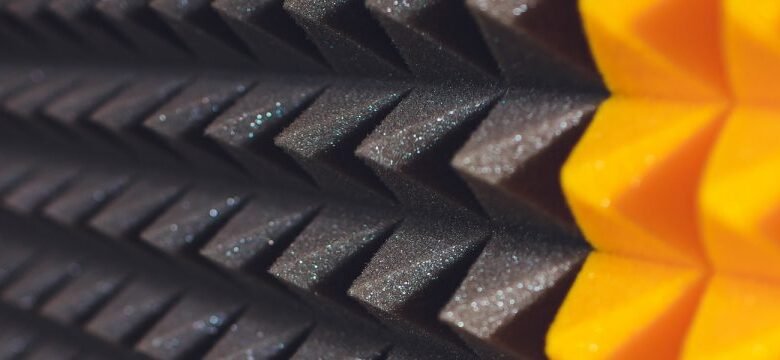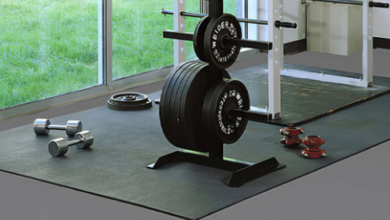Acoustic Foam: Enhancing Room Acoustics and Noise Control

Acoustic foam soundproofing is a widely used solution for reducing unwanted noise and improving sound quality within a space. Whether it’s a recording studio, home theater, office, or public venue, soundproofing foam helps absorb sound waves, minimizing echoes and reverberations. This article explores the properties, benefits, applications, installation techniques, and maintenance tips for acoustic foam soundproofing.
What is Acoustic Foam Soundproofing?
Acoustic foam is a specialized material designed to absorb sound energy rather than block it. Made from polyurethane or melamine foam, it comes in various shapes like pyramids, wedges, and egg crates. These designs maximize surface area, allowing for greater absorption of sound waves, particularly in the mid-to-high frequency range.
While acoustic foam soundproofing significantly improves the acoustics of a room, it does not entirely prevent sound from entering or leaving a space. For full soundproofing, additional materials like mass-loaded vinyl or drywall may be required.
How Does Acoustic Foam Soundproofing Work?
Acoustic foam reduces noise by absorbing sound waves, preventing them from bouncing off walls and creating echoes. The efficiency of the foam depends on several factors:
- Surface Area: The unique shapes of soundproofing foam increase the absorption capacity.
- Density: Higher density foam absorbs more sound energy, improving effectiveness.
- Frequency Absorption: It is most effective at mid-to-high frequencies, while low-frequency sounds require thicker foam or bass traps.
Benefits of Acoustic Foam Soundproofing
Using acoustic foam in various settings offers numerous advantages:
1. Improved Sound Clarity
- Reduces echoes and background noise, enhancing speech intelligibility and audio quality.
- Ideal for recording studios and home theaters where sound clarity is essential.
2. Noise Reduction in Workspaces
- Helps reduce distractions in offices by absorbing excess noise.
- Improves focus and productivity in professional environments.
3. Better Acoustic Control in Public Spaces
- Used in restaurants, gyms, and auditoriums to create a more comfortable sound environment.
- Prevents excessive noise from disrupting conversations or activities.
4. Cost-Effective Solution
- More affordable compared to other soundproofing options like mass-loaded vinyl or specialized drywall.
- Easy to install without requiring major renovations.
5. Aesthetic Appeal
- Available in various designs and colors to complement different interior styles.
- Enhances the overall look of a space while serving a functional purpose.
Applications of Acoustic Foam Soundproofing
Acoustic foam soundproofing is widely used across various industries and environments:
- Recording Studios: Reduces unwanted reflections and enhances audio recording quality.
- Home Theaters: Prevents sound distortions and improves the overall viewing experience.
- Offices & Conference Rooms: Reduces background noise for clear communication.
- Restaurants & Public Venues: Controls ambient noise levels for a comfortable atmosphere.
- Educational Institutions: Improves acoustics in classrooms and lecture halls.
How to Install Acoustic Foam Soundproofing
Proper installation is key to maximizing the effectiveness of soundproofing foam. Follow these guidelines:
1. Determine Coverage Area
- For noticeable improvements, cover at least 20-30% of wall space.
- More coverage leads to better sound absorption.
2. Identify Key Placement Areas
- Install foam panels at first reflection points, corners, and ceilings.
- Focus on areas where sound waves tend to bounce.
3. Choose the Right Installation Method
- Spray Adhesive: Provides strong and permanent attachment.
- Double-Sided Tape: Ideal for temporary or rental spaces.
- Mounting Brackets: Allows for repositioning if needed.
4. Ensure a Clean Surface
- Wipe down walls before installation to remove dust and debris.
- This helps adhesives stick properly and ensures longevity.
Limitations of Acoustic Foam Soundproofing
While soundproofing foam offers numerous benefits, it is essential to understand its limitations:
- Not True Soundproofing: It absorbs sound but does not block it entirely.
- Limited Effectiveness for Low Frequencies: Bass traps may be necessary for deeper sound absorption.
- Needs Complementary Materials for Full Sound Isolation: Combining foam with mass-loaded vinyl or specialized drywall provides better results.
Maintenance and Care
To ensure the longevity and effectiveness of acoustic foam soundproofing, follow these maintenance tips:
- Regular Cleaning: Dust foam panels using a vacuum or soft brush.
- Avoid Water & Harsh Chemicals: Moisture can damage the foam’s structure.
- Prevent UV Exposure: Direct sunlight can cause foam to degrade over time.
Conclusion
Acoustic foam soundproofing is an excellent solution for improving acoustics and reducing unwanted noise in various settings. Whether used in recording studios, offices, or public spaces, soundproofing foam enhances sound clarity and creates a more comfortable environment. However, for complete soundproofing, it should be used alongside other materials like drywall and mass-loaded vinyl.
By installing and maintaining acoustic foam correctly, you can significantly improve the sound quality of any space while enjoying a cost-effective and aesthetically pleasing solution.




